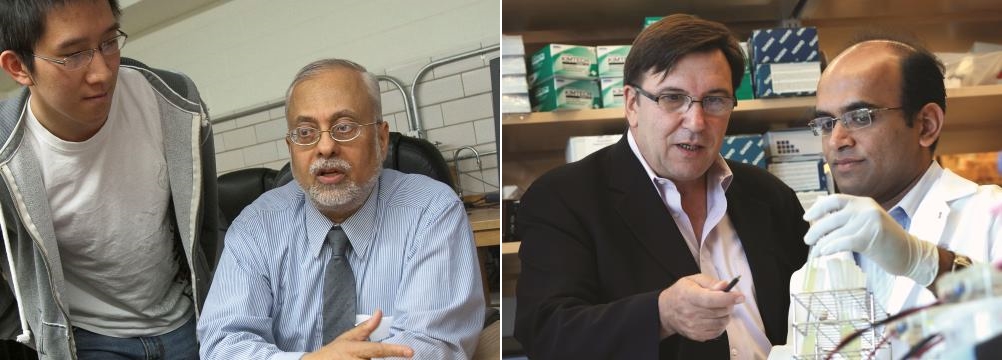L. Ramdas Ram-Mohan, professor of physics at Worcester Polytechnic Institute (WPI), received the Chairman's Exemplary Faculty Prize today during the university’s 143rd Commencement exercises. The tradition of awarding the prize, which honors WPI faculty members for overall excellence, was established in 2007 through the personal philanthropy of Donald K. Peterson '71, former chair of the WPI Board of Trustees, and is continued today by current Board Chair Stephen E. Rubin '74.
Unlike WPI's Board of Trustees Awards, which recognize excellence in particular areas of faculty performance (teaching, research and scholarship, and advising), the Chairman's Exemplary Faculty Prize, in the amount of $10,000, recognizes and rewards faculty members who excel in all relevant areas of faculty performance. “They are true exemplars of the Institute's highest aspirations and most important qualities," WPI President Dennis Berkey noted in announcing the new awards.
During his three decades on the WPI faculty, Ramdas Ram-Mohan has developed an international reputation as a pioneer in solid state physics, a field that has helped propel extraordinary advances in the speed and power of computers, telecommunications systems, lasers, and other high-tech devices. In addition to exploring the quantum mechanical properties of condensed matter, he has developed powerful computational tools that have made it possible to predict with great accuracy the properties of increasingly complex semiconductor and optoelectronic devices and to precisely control the design of these ubiquitous systems.
The director of the university's Center for Computational Nanoscience, Ram-Mohan's work on high-energy physics, condensed matter, and semiconductor physics has resulted in more than 200 peer-reviewed publications that have garnered more than 3,800 citations. He is also the founder of wavefunction engineering, a method for specifying certain quantum properties of semiconductor heterostructures—assemblies of two dissimilar semiconductor materials that display unique electrical or optoelectronic properties. This innovative method arises from the application of the finite element method, or FEM, a numerical analysis technique used widely in engineering, to quantum heterostructures. Ram-Mohan, recognized as one of the foremost authorities on FEM, described this new field in his landmark 2002 book, Finite Element and Boundary Element Applications to Quantum Mechanics.
Ram-Mohan's research has earned him numerous awards and honors, including election as a fellow of the American Physical Society, the Optical Society of America, the Australian Institute of Physics, and the United Kingdom Institute of Physics. He has received the Engineering Excellence Award of the Optical Society of America and the Department of the Air Force Certificate of Achievement, and served as the Clark Way Harrison Distinguished Visiting Professorship at Washington University in St. Louis in 2005. WPI has recognized his research with the Sigma Xi Senior Faculty Award for Research Excellence and the Board of Trustees' Award for Outstanding Creative Scholarship and Research.
WPI has also bestowed on Ram-Mohan its highest honor for teaching, the Board of Trustees' Award for Outstanding Teaching, in recognition of his many educational innovations and his ability to achieve a critical balance between mentoring students and teaching them to think independently. He is adept at bringing his scholarship into the classroom and engaging undergraduates directly in his research; in fact, 24 of the major projects he has advised have been recognized with the Provost's MQP Award.
When not in the laboratory or classroom, Ram-Mohan has been active in service to the university. He has twice served as president of the WPI chapter of the Society of Sigma Xi and has been a member of the faculty Committee on Appointments and Promotions. Within the Department of Physics, he has served on numerous search committees, the tenure committee, and the graduate studies committee, among others.



